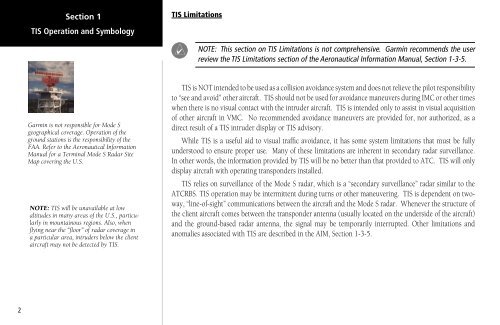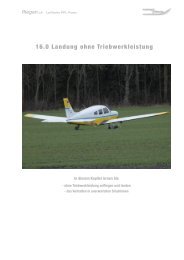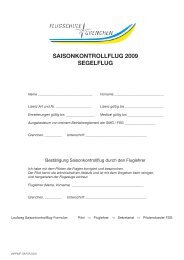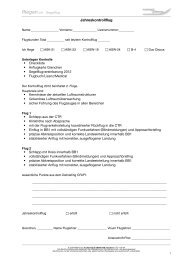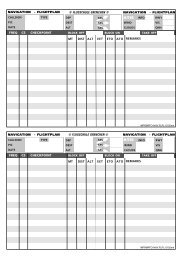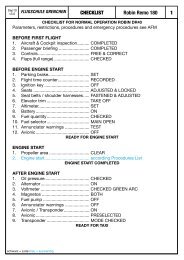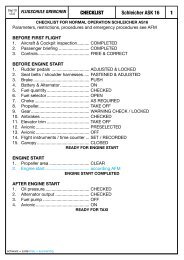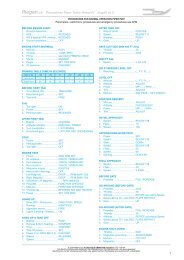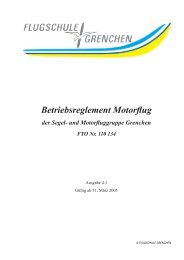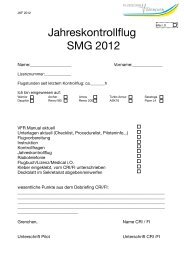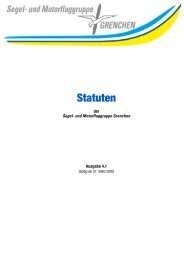400/500 Series Garmin Optional Displays
400/500 Series Garmin Optional Displays
400/500 Series Garmin Optional Displays
You also want an ePaper? Increase the reach of your titles
YUMPU automatically turns print PDFs into web optimized ePapers that Google loves.
2<br />
Section 1<br />
TIS Operation and Symbology<br />
<strong>Garmin</strong> is not responsible for Mode S<br />
geographical coverage. Operation of the<br />
ground stations is the responsibility of the<br />
FAA. Refer to the Aeronautical Information<br />
Manual for a Terminal Mode S Radar Site<br />
Map covering the U.S.<br />
NOTE: TIS will be unavailable at low<br />
altitudes in many areas of the U.S., particularly<br />
in mountainous regions. Also, when<br />
flying near the “floor” of radar coverage in<br />
a particular area, intruders below the client<br />
aircraft may not be detected by TIS.<br />
TIS Limitations<br />
NOTE: This section on TIS Limitations is not comprehensive. <strong>Garmin</strong> recommends the user<br />
review the TIS Limitations section of the Aeronautical Information Manual, Section 1-3-5.<br />
TIS is NOT intended to be used as a collision avoidance system and does not relieve the pilot responsibility<br />
to “see and avoid” other aircraft. TIS should not be used for avoidance maneuvers during IMC or other times<br />
when there is no visual contact with the intruder aircraft. TIS is intended only to assist in visual acquisition<br />
of other aircraft in VMC. No recommended avoidance maneuvers are provided for, nor authorized, as a<br />
direct result of a TIS intruder display or TIS advisory.<br />
While TIS is a useful aid to visual traffic avoidance, it has some system limitations that must be fully<br />
understood to ensure proper use. Many of these limitations are inherent in secondary radar surveillance.<br />
In other words, the information provided by TIS will be no better than that provided to ATC. TIS will only<br />
display aircraft with operating transponders installed.<br />
TIS relies on surveillance of the Mode S radar, which is a “secondary surveillance” radar similar to the<br />
ATCRBS. TIS operation may be intermittent during turns or other maneuvering. TIS is dependent on twoway,<br />
“line-of-sight” communications between the aircraft and the Mode S radar. Whenever the structure of<br />
the client aircraft comes between the transponder antenna (usually located on the underside of the aircraft)<br />
and the ground-based radar antenna, the signal may be temporarily interrupted. Other limitations and<br />
anomalies associated with TIS are described in the AIM, Section 1-3-5.


